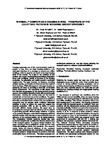Thermally Comfortable Housing in Iraq—Prospects of the Courtyard Pattern in Achieving Energy Efficiency
| dc.contributor.author | Al-Hafith, Omar | |
| dc.contributor.author | B. K., S | |
| dc.contributor.author | Bradbury, S | |
| dc.contributor.author | de Wilde, Pieter | |
| dc.date.accessioned | 2019-01-21T10:44:38Z | |
| dc.date.available | 2019-01-21T10:44:38Z | |
| dc.date.issued | 2018-03 | |
| dc.identifier.isbn | 9783319637082 | |
| dc.identifier.issn | 2366-2557 | |
| dc.identifier.issn | 2366-2565 | |
| dc.identifier.uri | http://hdl.handle.net/10026.1/13176 | |
| dc.description.abstract |
Iraq suffers from large housing problems. It is estimated that there is a shortage of around one million dwellings, which is equal to one-fourth of the total housing stock in the country. As a part of the solutions, the country needs architectural designs that satisfy three main conditions: enable an increase of the housing production, be affordable and satisfy people’s residential requirements. The latter includes, for instance, providing suitable layouts, comfortable environment and the required level of privacy. Within this spectrum, this paper focuses on providing a thermally comfortable indoor environment. The importance of this aspect is raised by the high temperatures in Iraq, the unreliable electricity supply, reducing the running costs and the need to maintain the environment at comfort conditions. The paper explores the courtyard pattern as an approach to achieve a thermally comfortable indoor environment, and studies how courtyards might be adopted within multistory residential buildings in order to reduce the costs and support the housing production. It reports on an extensive literature review that investigates published scientific studies within the last ten years about the thermal efficiency of the courtyard pattern and its design features. To propose design solutions, the paper considered the investigation’s results and the main residential buildings criteria and standards. The research results define the courtyard pattern thermal efficiency and demonstrate the importance of adopting the courtyard pattern’s design features to provide a thermally comfortable indoor environment. It also proposes two architectural solutions for Iraq that include using courtyards in multistory residential buildings. | |
| dc.format.extent | 904-917 | |
| dc.language.iso | en | |
| dc.publisher | Springer International Publishing | |
| dc.subject | Affordable housing | |
| dc.subject | Courtyard residential buildings | |
| dc.subject | Thermally efficient housing | |
| dc.subject | Housing in Iraq | |
| dc.title | Thermally Comfortable Housing in Iraq—Prospects of the Courtyard Pattern in Achieving Energy Efficiency | |
| dc.type | conference | |
| dc.type | Chapter | |
| plymouth.author-url | https://www.webofscience.com/api/gateway?GWVersion=2&SrcApp=PARTNER_APP&SrcAuth=LinksAMR&KeyUT=WOS:000449105000069&DestLinkType=FullRecord&DestApp=ALL_WOS&UsrCustomerID=11bb513d99f797142bcfeffcc58ea008 | |
| plymouth.volume | 6 | |
| plymouth.publication-status | Published | |
| plymouth.journal | PROCEEDINGS OF 3RD INTERNATIONAL SUSTAINABLE BUILDINGS SYMPOSIUM (ISBS 2017), VOL 1 | |
| dc.identifier.doi | 10.1007/978-3-319-63709-9_69 | |
| plymouth.organisational-group | /Plymouth | |
| plymouth.organisational-group | /Plymouth/Faculty of Arts, Humanities and Business | |
| plymouth.organisational-group | /Plymouth/REF 2021 Researchers by UoA | |
| plymouth.organisational-group | /Plymouth/REF 2021 Researchers by UoA/UoA13 Architecture, Built Environment and Planning | |
| plymouth.organisational-group | /Plymouth/Users by role | |
| plymouth.organisational-group | /Plymouth/Users by role/Academics | |
| dcterms.dateAccepted | 2018-01-01 | |
| dc.rights.embargodate | 2022-1-25 | |
| dc.identifier.eissn | 2366-2565 | |
| dc.rights.embargoperiod | Not known | |
| rioxxterms.versionofrecord | 10.1007/978-3-319-63709-9_69 | |
| rioxxterms.licenseref.uri | http://www.rioxx.net/licenses/all-rights-reserved | |
| rioxxterms.licenseref.startdate | 2018-03 | |
| rioxxterms.type | Conference Paper/Proceeding/Abstract |


